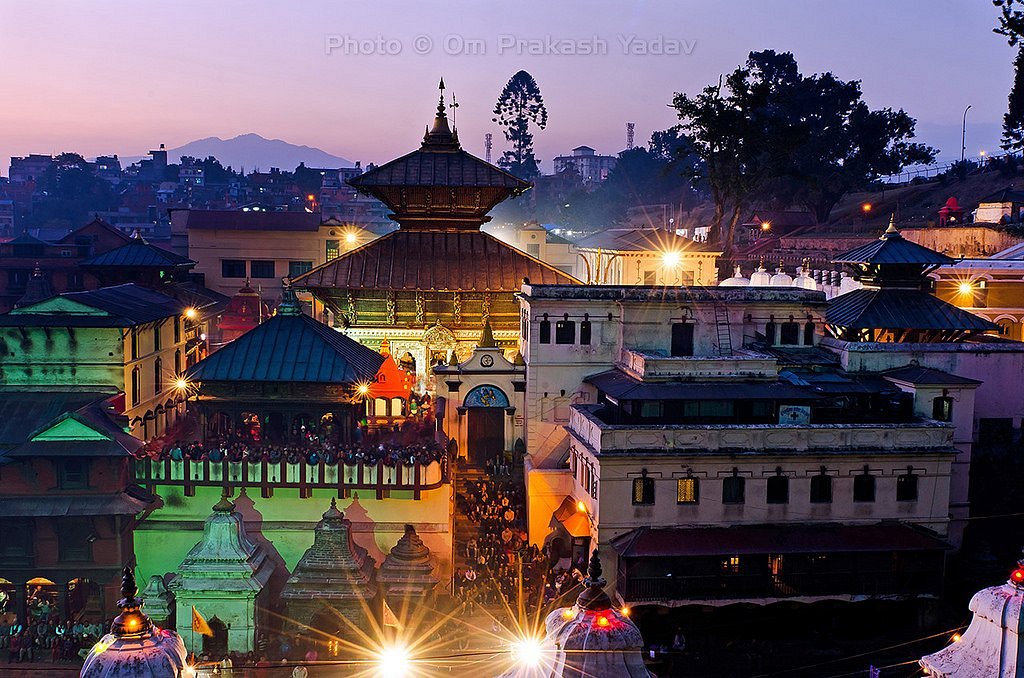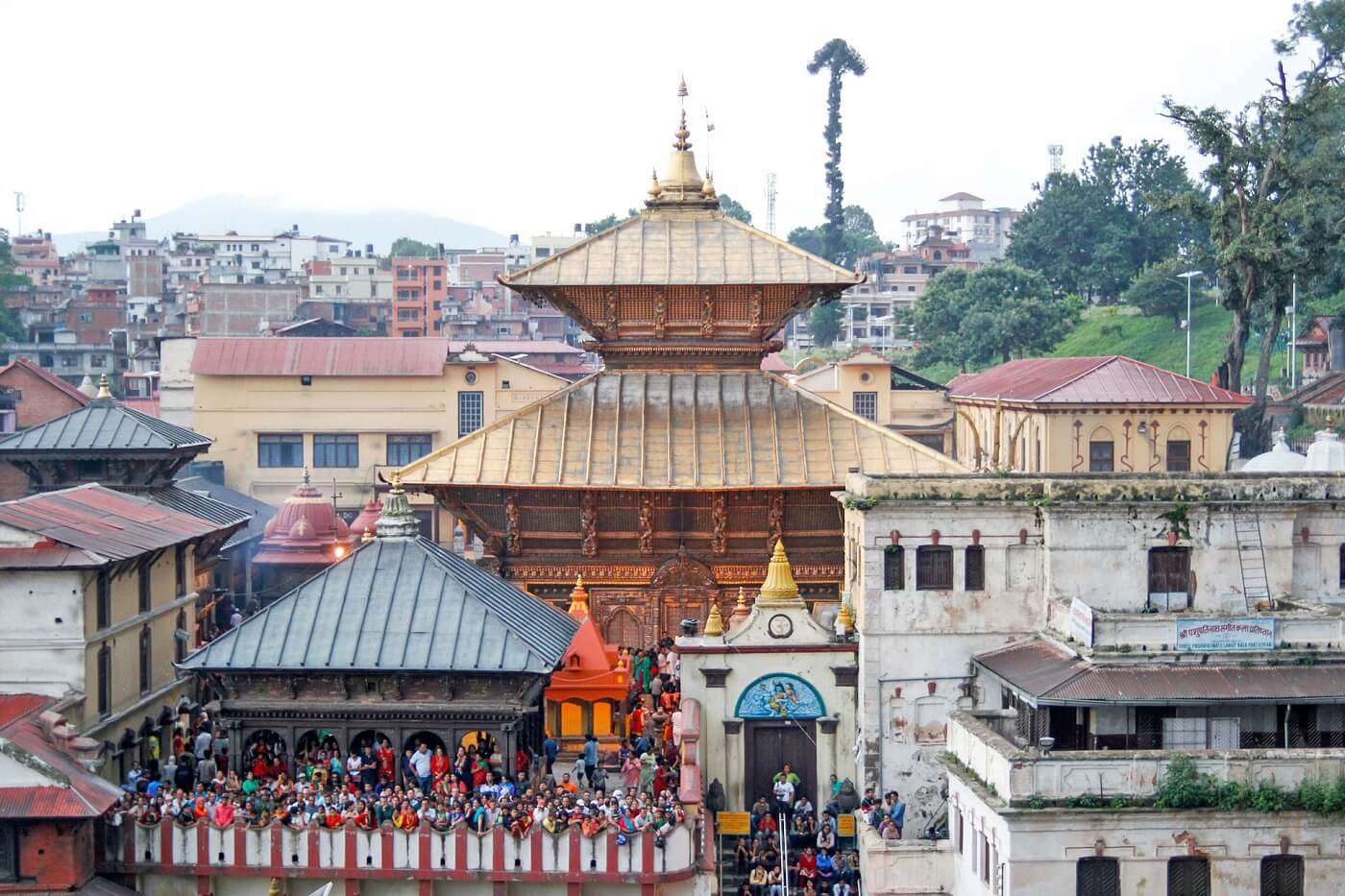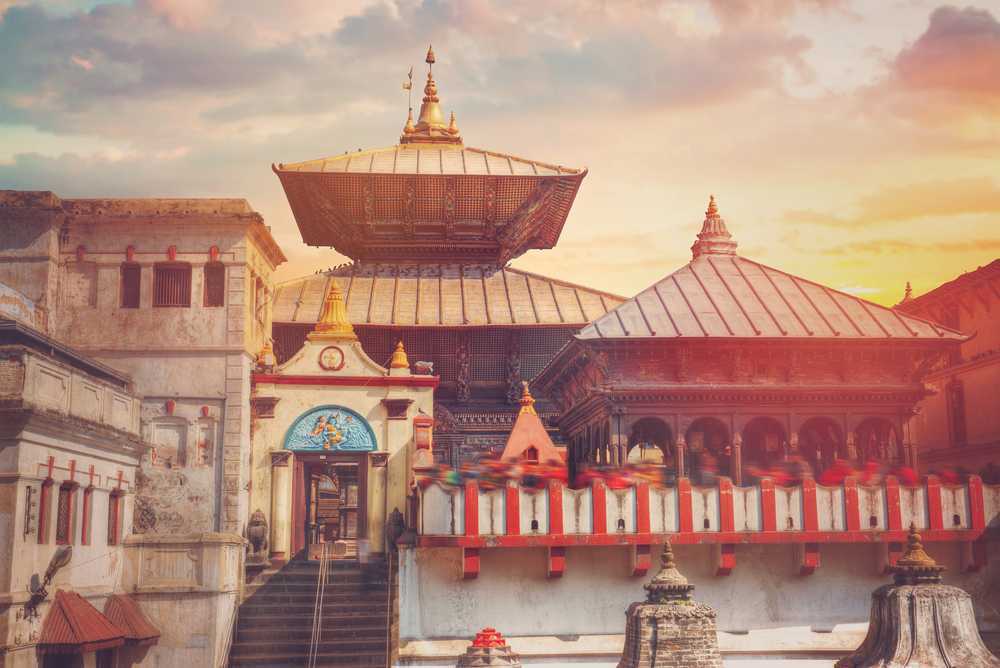Pashupatinath: Kathmandu's Soulful Shores
History and significance of Pashupatinath
Pashupatinath is a revered Hindu temple located on the banks of the Bagmati River in Kathmandu, the capital city of Nepal. Its name is derived from the Hindu god Shiva, who is worshipped here in the form of Pashupati. The temple dates back to ancient times, with the earliest references to its existence found in manuscripts dating as far back as the 9th century.
The significance of Pashupatinath extends beyond its religious associations. It is considered one of the most important and holiest Hindu pilgrimage sites in the world. Devotees from far and wide visit the temple to seek blessings and offer prayers to Lord Shiva. The temple complex is also a UNESCO World Heritage Site, recognized for its cultural, religious, and historical importance.
Pashupatinath's sacred location and cultural significance
Pashupatinath is situated on the sacred banks of the Bagmati River, which holds immense religious significance among Hindus. The river is believed to purify the soul and facilitate the attainment of moksha, liberation from the cycle of birth and death.
The temple complex is not only a place of worship but also a cultural hub. It is a gathering place for sadhus, Hindu ascetics who dedicate their lives to spiritual pursuits. These holy men can be distinguished by their distinctive appearance and clothing, which include dreadlocks, ash-covered bodies, and various ornaments.
The temple is also home to many rituals throughout the year, which attract thousands of devotees and tourists. One of the most significant festivals celebrated here is Maha Shivaratri, the Night of Shiva, during which devotees fast, chant prayers, and offer flowers, fruits, and milk to the deity.
Pashupatinath is not only a religious site but also a place of immense cultural and historical importance. Its sacred location on the banks of the Bagmati River and its role in Hindu mythology make it a must-visit destination for spiritual seekers and those interested in experiencing the rich heritage of Kathmandu.

Architectural Marvels at Pashupatinath
Pashupatinath Temple: An exquisite display of Nepalese craftsmanship
The Pashupatinath Temple, the main temple within the Pashupatinath complex, is an architectural masterpiece and a testament to the rich heritage of Nepalese craftsmanship. The temple's distinct pagoda-style architecture, adorned with intricate carvings and golden spires, is a sight to behold.
As you enter the temple, you will be greeted by the awe-inspiring deity of Lord Pashupatinath, resplendent in all his glory. The sanctum sanctorum, where the deity is housed, is decorated with ornate woodwork and precious stones, creating a divine atmosphere that resonates with spiritual energy.
Outside the main temple, you will find smaller shrines dedicated to various Hindu deities, each showcasing its own unique design and aesthetics. These intricately crafted shrines are a testament to the skills of Nepalese artisans, who have painstakingly created each structure with great attention to detail.
Walking through the temple complex, you will come across beautifully adorned gateways, known as toranas, which feature delicate carvings depicting scenes from Hindu mythology. These toranas serve as a gateway to the spiritual realm and provide a sense of grandeur to the overall architecture of the complex.
Other notable structures within the Pashupatinath complex
Aside from the Pashupatinath Temple, the complex also houses several other noteworthy structures that add to its architectural splendour.
The Bhandarkhal Garden, located within the premises, is a peaceful retreat adorned with lush greenery and colourful flowers. It offers a tranquil setting for visitors to relax and soak in the divinity of the surroundings.
The Arun River Bridge, a magnificent suspension bridge spanning the Bagmati River, provides a stunning vantage point from which to admire the temple complex from a different perspective. The bridge's intricate design and sturdy construction make it an engineering marvel.
A visit to Pashupatinath is incomplete without exploring the sacred ghats, where cremations take place. These ghats, adorned with traditional stone carvings, hold deep spiritual significance and add a solemn beauty to the overall ambience of the complex.
Overall, the architectural marvels at Pashupatinath are a testament to the rich cultural and artistic heritage of Nepal. A visit to this sacred site will not only be a religious experience but also a journey through the craftsmanship and artwork of ancient Nepalese artisans.

Religious Practices and Festivals at Pashupatinath
Hindu rituals and ceremonies performed at Pashupatinath
When you visit Pashupatinath, you will witness a variety of religious rituals and ceremonies being performed by devotees. These practices hold deep significance in Hindu culture and offer a glimpse into the spiritual beliefs of the Nepalese people.
One of the most common rituals you will come across is the daily puja (worship) of Lord Pashupatinath. Devotees offer flowers, incense, and other offerings to seek blessings from the deity. The temple priests perform these rituals with great devotion and follow strict guidelines passed down through generations.
Another important ceremony is the Aarati, an offering of light and prayers to the deities. Aaratis are performed twice daily, in the morning and evening, and attract devotees who gather to participate in this sacred act of devotion. The sight of hundreds of lamps being lit simultaneously creates a mesmerizing spectacle.
Furthermore, Pashupatinath is a popular destination for performing religious rites for the deceased. Cremations take place at the sacred ghats (river banks), and it is believed that this ritual helps the departed souls attain moksha (liberation from the cycle of birth and death). Witnessing this ritual can be a solemn but enlightening experience.
Major festivals celebrated at Pashupatinath
Pashupatinath is not only a place of worship but also a hub for various colourful festivals. These celebrations attract a large number of devotees and tourists alike, adding to the vibrant atmosphere of the temple.
One of the most significant festivals celebrated at Pashupatinath is Shivaratri, the Night of Lord Shiva. During this festival, devotees observe a day-long fast and offer prayers to Lord Shiva. The temple is beautifully decorated, and various cultural performances take place, making it a memorable experience for all visitors.
Another important festival is Teej, which is celebrated by married Hindu women. It is a day of fasting, and devotees pray for the well-being and longevity of their husbands. The temple is adorned with colourful decorations, and women dressed in traditional attire sing and dance to the beats of traditional music.
Pashupatinath also hosts the Bala Chaturdashi festival, which is dedicated to honouring deceased loved ones. Devotees light oil lamps and chant sacred mantras while the ghats are illuminated with the warm glow of countless candles, creating a serene and mystical ambience.
These festivals provide a unique opportunity to immerse yourself in the vibrancy and spirituality of Nepalese culture. Visiting Pashupatinath during these celebrations is a truly enriching experience.
Pilgrimage site for Hindus worldwide
When you visit Pashupatinath, you will be stepping into a place that holds immense cultural and spiritual significance for Hindus around the world. This sacred temple is considered one of the most important pilgrimage sites for Hindus, attracting devotees from far and wide.
The rituals and ceremonies performed at Pashupatinath reflect the deep-rooted beliefs and traditions of Hinduism. Witnessing these practices firsthand gives you a glimpse into the devotion and faith that people have in Lord Pashupatinath.
Pashupatinath as a centre of spirituality and meditation
Beyond being a place of worship, Pashupatinath offers a serene environment for spiritual seekers and those looking for inner peace. The temple complex is not only home to the main Pashupatinath temple but also numerous smaller shrines and meditation spaces.
Visitors can engage in meditation and reflection, immersing themselves in the peaceful atmosphere that pervades the temple grounds. The tranquil surroundings and the rhythmic chants of mantras create an ideal environment for self-reflection and rejuvenation.
If you are interested in learning more about Hinduism and its spiritual teachings, Pashupatinath provides a unique opportunity to witness firsthand the practices and traditions of this ancient religion. The temple priests are often willing to answer questions and share insights, providing a deeper understanding of Hindu spirituality.
By visiting Pashupatinath, you can not only experience the rich cultural heritage of Nepal but also explore your own spirituality and connect with something greater than yourself. Whether you are a devoted Hindu or simply curious about different religious beliefs, Pashupatinath offers a truly transformative experience.

Wildlife and Natural Beauty Surrounding Pashupatinath
Flora and fauna in the Pashupatinath area
Not only is Pashupatinath a significant religious site, but it is also surrounded by stunning natural beauty. The area is home to a diverse range of flora and fauna, making it a haven for nature enthusiasts.
The lush greenery surrounding the temple complex provides a refreshing contrast to the bustling cityscape of Kathmandu. As you stroll around the temple grounds, you may come across various species of trees, flowers, and plants. The vibrant colours and fragrant aromas add to the overall sensory experience of your visit.
The Pashupatinath area is also known for its birdlife. Birdwatchers will be delighted to spot different species of birds, including kingfishers, herons, and colourful parakeets. Keep your eyes peeled as you explore the serene surroundings of Pashupatinath, as there may be hidden treasures waiting to be discovered.
Scenic beauty and tranquillity of the Bagmati River
One of the highlights of visiting Pashupatinath is the opportunity to witness the serene beauty of the Bagmati River. Flowing right next to the temple complex, the river adds an element of calm and tranquillity to the surroundings.
The Bagmati River holds great religious significance in Hinduism and is considered holy by devotees. As you sit by the riverbank, you can take in the breathtaking views and listen to the soothing sound of flowing water. The peaceful ambience makes it an ideal spot for meditation and self-reflection.
Additionally, the Bagmati River is home to a range of aquatic life. Keep an eye out for fish swimming in the crystal-clear waters, adding to the natural beauty of the area.
Visiting Pashupatinath allows you to not only immerse yourself in Hindu spirituality but also connect with nature and experience the serene beauty of the surrounding environment. Whether you are a nature lover or someone seeking tranquillity, the wildlife and natural beauty surrounding Pashupatinath will undoubtedly leave a lasting impression on your visit.

Spiritual Experiences and Activities at Pashupatinath
Participating in aarti (prayer ceremony) at Pashupatinath
When visiting Pashupatinath, one of the spiritual experiences not to be missed is the aarti, or prayer ceremony. Joining in this ritual allows you to witness and be part of the devotional atmosphere that fills the air. As the priests perform the aarti with reverence and devotion, the rhythmic chanting and the glow of the oil lamps create a mesmerizing ambience. It is a moment of connection to immerse yourself in the spiritual energy of this sacred place.
Guided tours and activities for spiritual seekers
If you are seeking a deeper understanding of Hinduism and the spiritual significance of Pashupatinath, guided tours and activities are available. Knowledgeable guides can provide insights into the history, architecture, and rituals associated with the temple complex. They can also lead you to lesser-known areas, where you can engage in meditation and reflection, allowing for a more personal and profound experience of spirituality.
In addition to guided tours, there are yoga and meditation sessions organized in the serene surroundings of Pashupatinath. These practices help you connect with your inner self, finding peace and tranquillity amidst the chaos of daily life. Participating in these activities allows you to deepen your spiritual journey and discover new perspectives.
Visiting Pashupatinath opens doors to not only witness the religious significance but also engage in spiritual experiences that can nourish your mind, body, and soul. Whether you choose to partake in aarti or explore guided tours and activities, Pashupatinath offers a multitude of opportunities for spiritual seekers to connect with Hindu traditions and find inner peace.

Preservation and Conservation Efforts at Pashupatinath
Challenges faced in maintaining the authenticity of Pashupatinath
Pashupatinath, being a sacred site of immense historical and cultural significance, faces several challenges in maintaining its authenticity and preserving its heritage. Some of the key challenges include:
- Increasing urbanization and encroachment: With the rapid urban development in the surrounding areas, Pashupatinath is under threat from encroachment. This poses a risk to the natural surroundings and the sanctity of the site.
- Environmental degradation: The high number of visitors, coupled with improper waste management practices, has led to environmental degradation in and around Pashupatinath. Pollution from various sources, including air and water pollution, poses a significant challenge.
- Conservation of structures and artefacts: The temple complex houses numerous ancient structures and artefacts that require regular maintenance and conservation efforts. The preservation of these structures is crucial to maintaining the historical and cultural integrity of the site.
Initiatives taken for the preservation of the sacred area
To address these challenges and ensure the preservation of Pashupatinath, several initiatives have been undertaken:
| Initiative | Description |
|---|---|
| Conservation and restoration projects | Various conservation and restoration projects have been carried out to preserve the temple complex, including the repair and renovation of historical structures and artworks. |
| Environmental sustainability measures | Efforts have been made to improve waste management practices and reduce pollution in and around Pashupatinath. This includes the installation of waste treatment facilities and the promotion of environmentally friendly practices among visitors. |
| Community engagement | The local community plays a vital role in the preservation of Pashupatinath. Initiatives have been taken to raise awareness among the community about the importance of preserving the site, and their participation in conservation efforts is encouraged. |
| Regulation and governance | Strict regulations and governance mechanisms have been put in place to ensure the proper management and maintenance of Pashupatinath. This includes the formation of committees and organizations responsible for overseeing the preservation of the site. |
These initiatives aim to strike a balance between preserving the authenticity of Pashupatinath and ensuring its accessibility to the millions of devotees and spiritual seekers who visit the site each year. The ongoing efforts are crucial in maintaining the sacredness and significance of this revered Hindu pilgrimage site for future generations.

Nearby Attractions and Amenities
Exploring the nearby Boudhanath Stupa
Boudhanath Stupa, a UNESCO World Heritage Site located close to Pashupatinath, is a must-visit attraction for visitors. This ancient stupa, considered one of the largest in the world, holds great religious significance for Buddhists. The stunning architecture, colourful prayer flags, and serene atmosphere make it a popular spot for meditation and spiritual contemplation. Visitors can also explore the numerous monasteries, shops, and cafes in the surrounding area, offering a unique cultural experience.
Restaurants and accommodations near Pashupatinath
For tourists looking to grab a bite to eat or find a place to stay near Pashupatinath, there are several options available. The nearby area offers a range of restaurants serving both local and international cuisine, catering to different tastes and preferences. From traditional Nepali dishes to popular international fare, visitors can enjoy a diverse culinary experience. Additionally, there are accommodations available in the vicinity, ranging from budget guesthouses to luxury hotels. These options provide comfortable and convenient stays for those wishing to spend more time exploring the spiritual and cultural wonders of Pashupatinath.

Tips for visiting and experiencing the soulful shores
When visiting Pashupatinath, it is important to be mindful and respectful of the sacredness of the site. Here are some tips to enhance your experience:
- Dress appropriately: As Pashupatinath is a place of worship, it is essential to dress modestly. Avoid wearing revealing clothing and opt for clothes that cover your shoulders and knees.
- Show reverence: Remember to maintain a respectful demeanour while exploring the temple complex. Keep your voice low, refrain from touching religious artefacts, and follow any instructions given by the temple authorities.
- Be aware of your surroundings: Pashupatinath can get crowded, especially during festivals and religious occasions. Stay alert and mindful of your belongings to ensure a safe and hassle-free visit.
- Engage with the local community: The people living around Pashupatinath have a deep connection with the site. Interact with them, learn about their traditions, and gain insights into the cultural heritage of the area.
- Support local businesses: While exploring the nearby attractions and amenities, consider supporting local restaurants, shops, and accommodations. This contributes to the sustainability of the local economy and helps preserve the unique character of the surrounding area.
Visiting Pashupatinath and its nearby attractions is a transformative experience that deeply connects visitors with spirituality and culture. By following these tips and immersing yourself in the vibrant atmosphere, you can make the most of your journey to this remarkable place.
